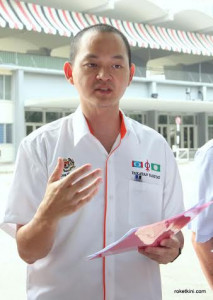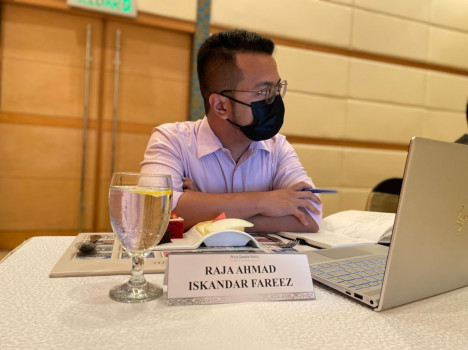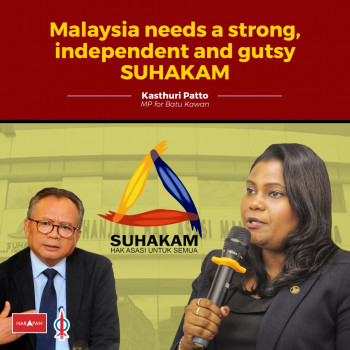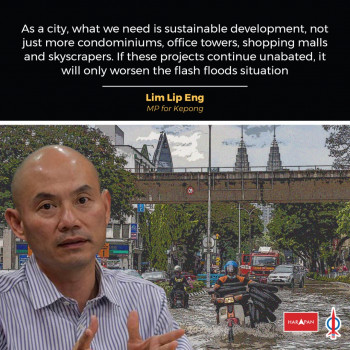 The ongoing Royal Commission of Inquiry (RCI) into Sabah’s illegal immigrant problem has thrown up more dirt and shocking revelation as the RCI session continues to unfold. In this analysis by Dr. Ong Kian Ming, Serdang MP and DAP election strategist, he points out the issue of registering problematic ICs is still continuing to plague the country. Will Malaysians take awareness and act on this findings?
The ongoing Royal Commission of Inquiry (RCI) into Sabah’s illegal immigrant problem has thrown up more dirt and shocking revelation as the RCI session continues to unfold. In this analysis by Dr. Ong Kian Ming, Serdang MP and DAP election strategist, he points out the issue of registering problematic ICs is still continuing to plague the country. Will Malaysians take awareness and act on this findings?
One of the terms of reference for the Sabah RCI is to scrutinize the effects of foreign workers, illegal immigrants and refugees on the electoral roll.
The testimony of Mr. Ruslan bin Alias, an assistant head in the IC division of Sabah and Sarawak in the National Registration Department (“NRD”) on 16 January 2013, revealed a list containing 130,549 ‘problematic’ old identity cards (IC) numbers where their records with the NRD were either incomplete or these cards had been cancelled.
These old IC numbers were divided into lists of P1 (51,300 old IC numbers), P2 (62,550 old IC numbers) and P3 (16,699 old IC numbers). The old ICs in lists P1 and P2 have been identified as ICs having incomplete information in the NRD while old ICs in list P3 have been cancelled in 1996.
According to Mr. Ruslan bin Alias, whose unit is in charge of investigating the problematic ICs in lists P1 and P2, only 8,553 (7.5 percent) out of 113,850 ICs in these lists have been investigated. This means that 105,297 (92.5 percent) out of 113,850 ICs have not been investigated.
Based on the list of P1 and P2 ICs, I was able to detect 49,159 voters on the electoral roll used in the recently concluded 13th General Election (GE). 23,179 voters had old ICs belonging to the P1 list and 25,980 voters had old ICs belonging to the P2 list. (See accompanying Table 1)
Table 1: Number of P1 and P2 ICs on the 2013 General elections electoral roll
|
Parliament code |
Parliamentary seat name |
P1 |
P2 |
P1+P2 |
Number of voters |
P1&P2 |
|
P191 |
KALABAKAN* |
3,612 |
2,638 |
6,250 |
46,793 |
13.4% |
|
P188 |
SILAM* |
2,956 |
3,158 |
6,114 |
51,662 |
11.8% |
|
P190 |
TAWAU* |
3,136 |
2,687 |
5,823 |
51,538 |
11.3% |
|
P171 |
SEPANGGAR |
1,211 |
3,047 |
4,258 |
53,374 |
8.0% |
|
P189 |
SEMPORNA* |
2,571 |
1,059 |
3,630 |
41,549 |
8.7% |
|
P173 |
PUTATAN |
1,028 |
2,462 |
3,490 |
37,490 |
9.3% |
|
P184 |
LIBARAN* |
1,653 |
1,392 |
3,045 |
39,772 |
7.7% |
|
P185 |
BATU SAPI* |
1,086 |
1,438 |
2,524 |
30,199 |
8.4% |
|
P186 |
SANDAKAN* |
960 |
1,053 |
2,013 |
37,058 |
5.4% |
|
P187 |
KINABATANGAN* |
705 |
843 |
1,548 |
24,748 |
6.3% |
|
P175 |
PAPAR |
414 |
1,026 |
1,440 |
38,771 |
3.7% |
|
P167 |
KUDAT |
692 |
535 |
1,227 |
47,249 |
2.6% |
|
P166 |
LABUAN |
276 |
789 |
1,065 |
24,474 |
4.4% |
|
P180 |
KENINGAU |
387 |
591 |
978 |
43,691 |
2.2% |
|
P172 |
KOTA KINABALU |
329 |
588 |
917 |
50,516 |
1.8% |
|
P177 |
BEAUFORT |
250 |
486 |
736 |
30,097 |
2.4% |
|
P169 |
KOTA BELUD |
257 |
436 |
693 |
51,467 |
1.3% |
|
P178 |
SIPITANG |
276 |
397 |
673 |
29,177 |
2.3% |
|
P170 |
TUARAN |
250 |
380 |
630 |
48,276 |
1.3% |
|
P176 |
KIMANIS |
136 |
305 |
441 |
26,628 |
1.7% |
|
P183 |
BELURAN |
219 |
193 |
412 |
24,688 |
1.7% |
|
P174 |
PENAMPANG |
115 |
208 |
323 |
44,323 |
0.7% |
|
P168 |
KOTA MARUDU |
196 |
100 |
296 |
42,197 |
0.7% |
|
P179 |
RANAU |
169 |
90 |
259 |
39,053 |
0.7% |
|
P181 |
TENOM |
216 |
43 |
259 |
25,304 |
1.0% |
|
P182 |
PENSIANGAN |
79 |
36 |
115 |
26,194 |
0.4% |
| Total |
23,179 |
25,980 |
49,159 |
1,006,288 |
4.9% |
(*) Located on the east coast of Sabah
Table 1 shows that a total of 4.9 percent of total voters in Sabah in the 2013 GE electoral roll held P1 and P2 old IC numbers. 8 out of 10 parliament seats with the highest number of P1 and P2 voters are located on the east coast of Sabah.
A further check of the electoral roll records shows that a majority of voters – 53.9 percent – were registered between 1990 and 2000, which was at the height of the activities of Project IC or Project M. (See accompanying Table 2)
Table 2: Percentage of P1 and P2 Voters by Decade of Registration
| Decade of Registration | % of P1 and P2 Voters |
| Registered before 1990 |
20.3% |
| Registered between 1990 and 2000 |
53.9% |
| Registered between 2000 and 2010 |
12.8% |
| Registered after 2010 |
12.9% |
But it is also important to note that more than 25 percent of P1 and P2 voters – 25.7 percent – were actually registered after 2000 including 12.9 percent that was registered after 2010. This means that the registering of voters with ‘problematic’ old ICs is still continuing.
Finally, this problem threatens to ‘spill-over’ to other states in Malaysia. I found 6,030 P1 and P2 voters who were registered in other states in Malaysia (See accompanying Table 3).
Table 3: P1 and P2 voters in other states
|
No |
State |
P1 |
P2 |
Total |
|
1 |
Selangor |
628 |
1,648 |
2,276 |
|
2 |
Johor |
222 |
856 |
1,078 |
|
3 |
W.P. (KL) |
158 |
654 |
812 |
|
4 |
Sarawak |
158 |
209 |
367 |
|
5 |
Perak |
59 |
223 |
282 |
|
6 |
Pahang |
111 |
167 |
278 |
|
7 |
Melaka |
39 |
204 |
243 |
|
8 |
Kedah |
66 |
113 |
179 |
|
9 |
Negeri Sembilan |
40 |
135 |
175 |
|
10 |
Kelantan |
34 |
80 |
114 |
|
11 |
Terengganu |
32 |
76 |
108 |
|
12 |
Penang |
20 |
80 |
100 |
|
13 |
Perlis |
4 |
14 |
18 |
| Total |
1,571 |
4,459 |
6,030 |
I strongly urge the Barisan Nasional government take seriously the accumulated findings of the Sabah RCI which points conclusively to the fact that the current electoral roll is filled with many voters with ‘problematic’ ICs. I further urge the BN government to clean up the electoral roll by conducting a thorough investigation into the authenticity of these above mentioned ICs.
If no concrete steps are taken upon the conclusion of the Sabah RCI, then this would be another meaningless exercise in the long line of RCIs called by the BN. It also means that the marginalization of genuine Sabahan voters and residents would continue unabated.
Finally, the delimitation exercise which is supposed to start at the end of the year, cannot take place in Sabah using a flawed electoral roll that has so many voters with problematic ICs in it.



